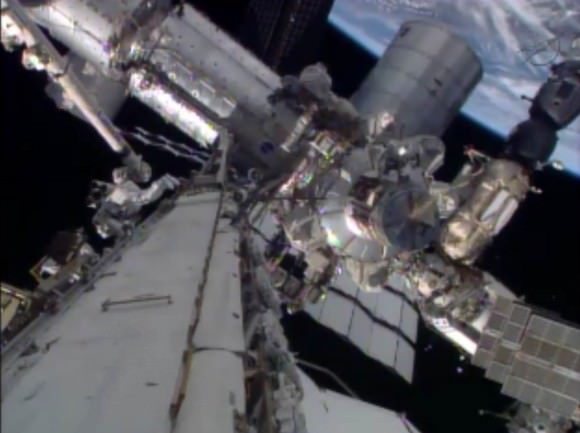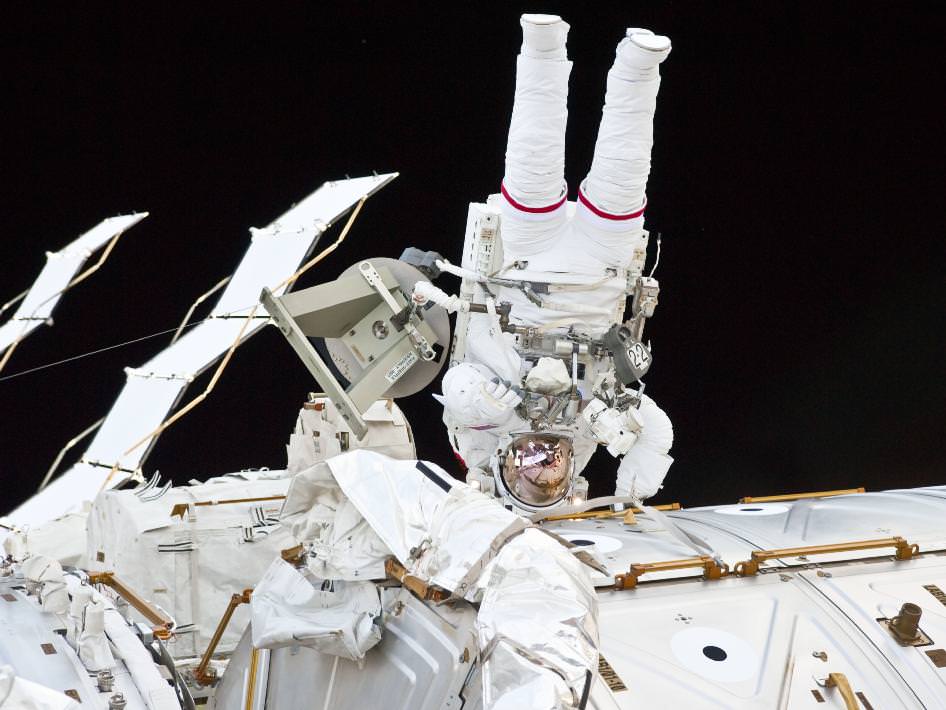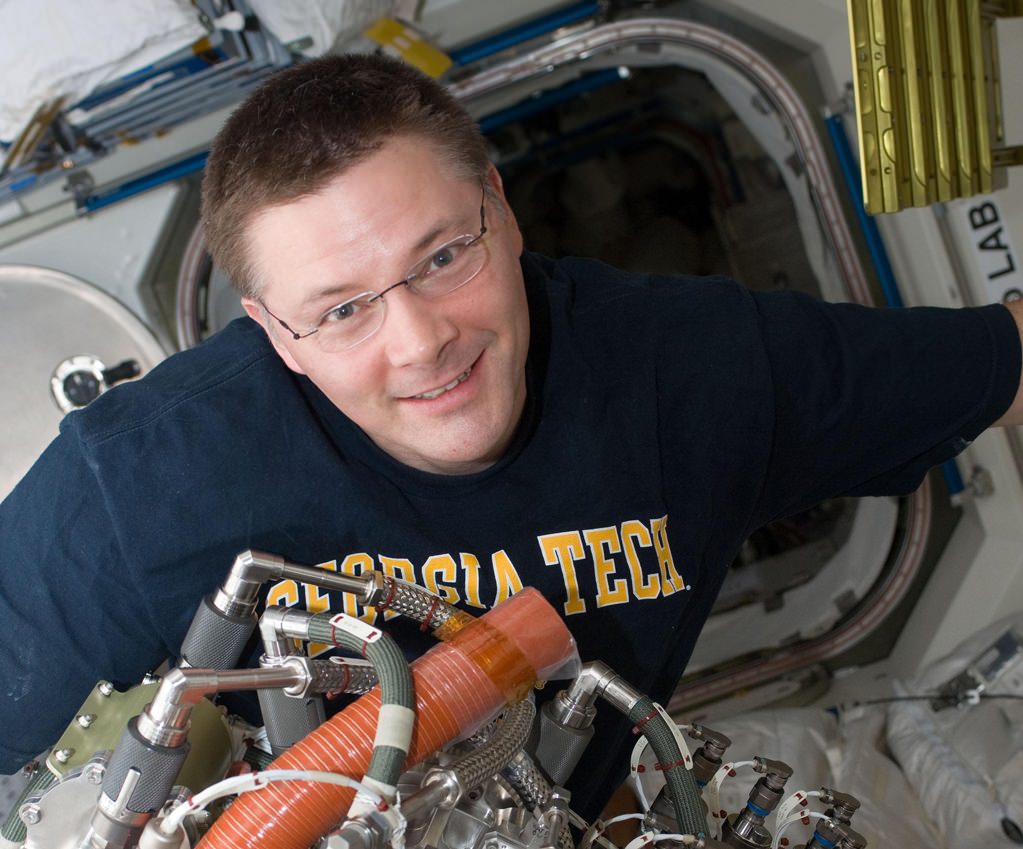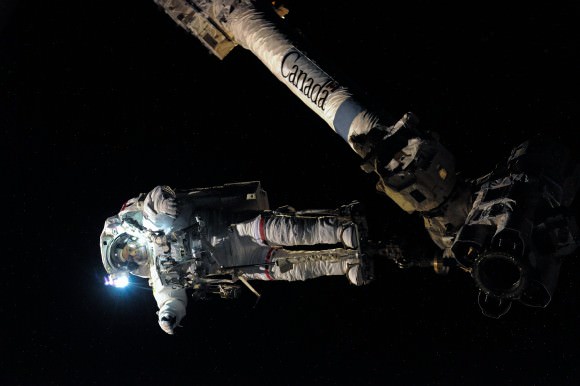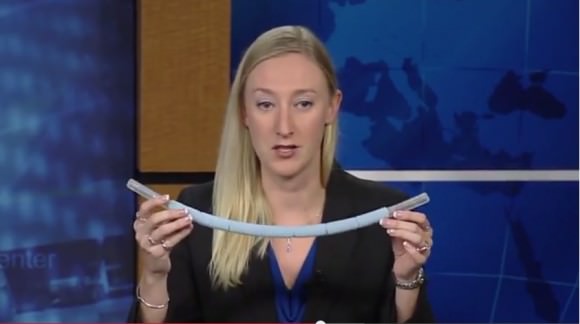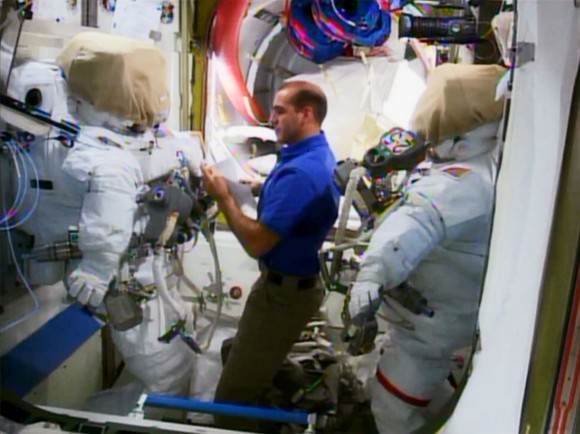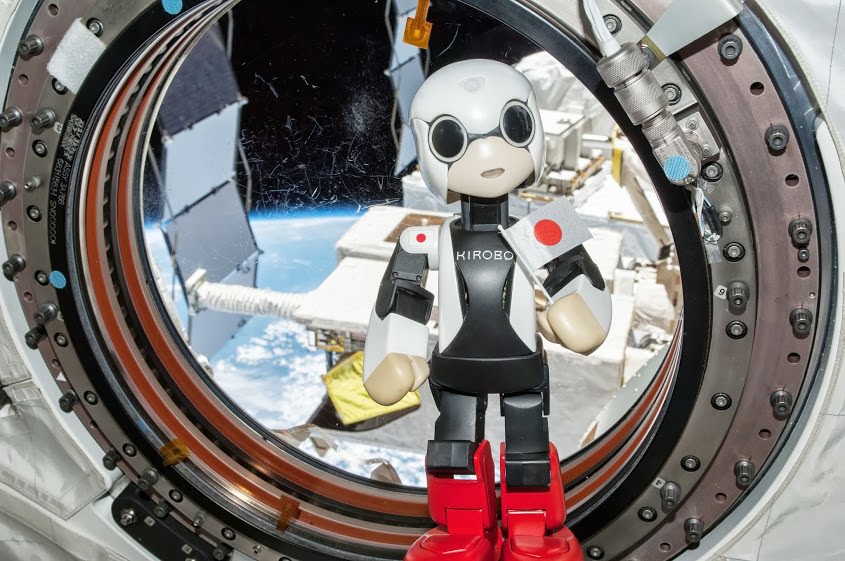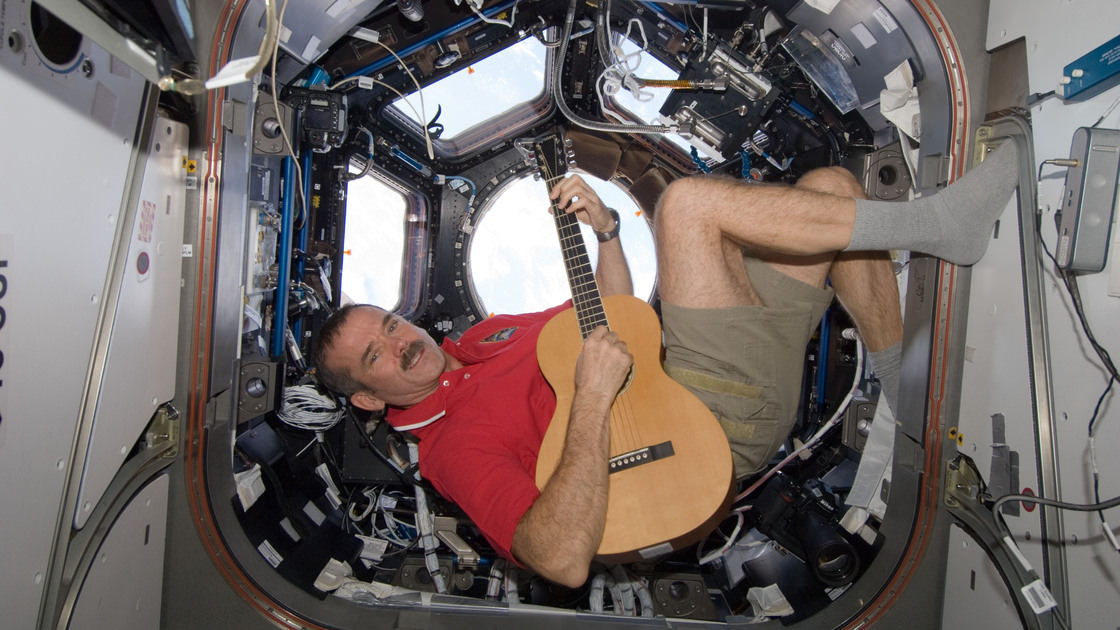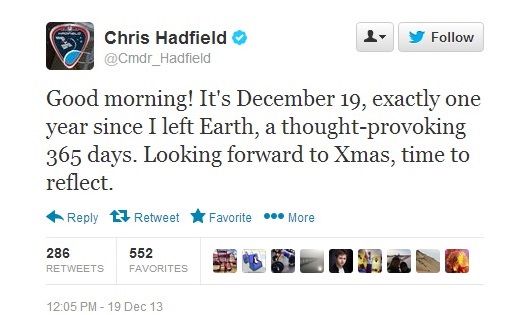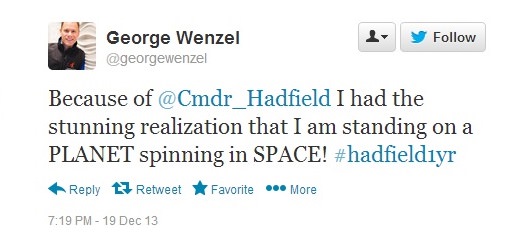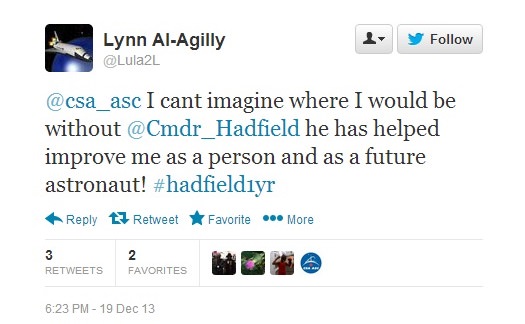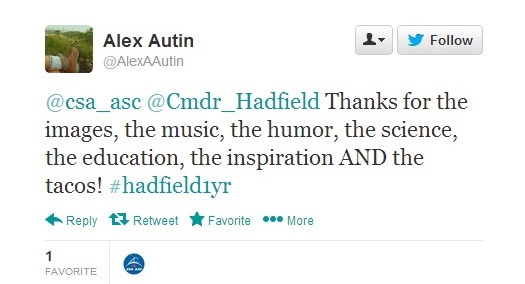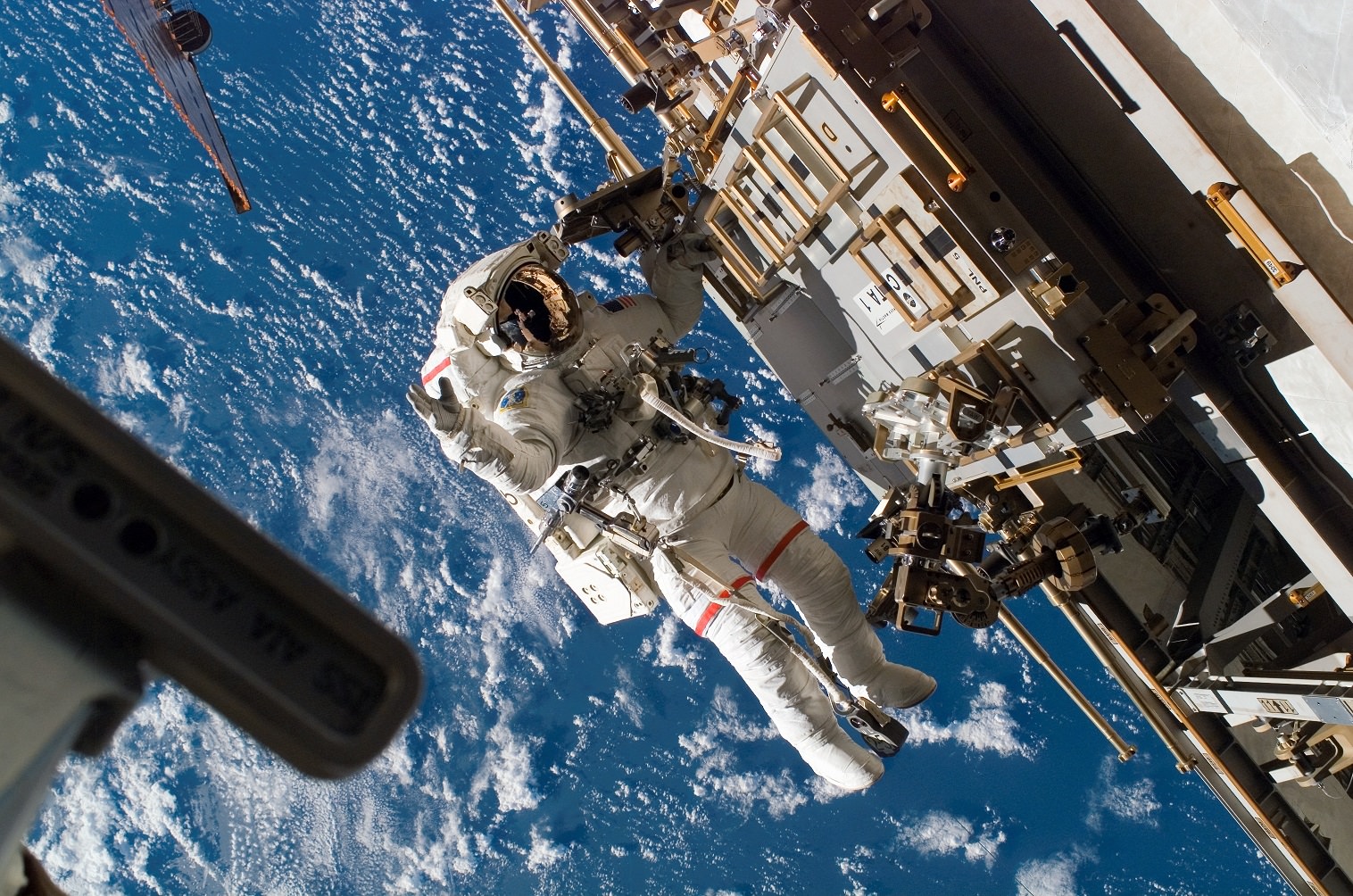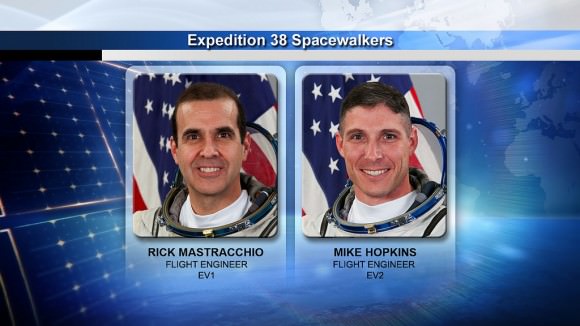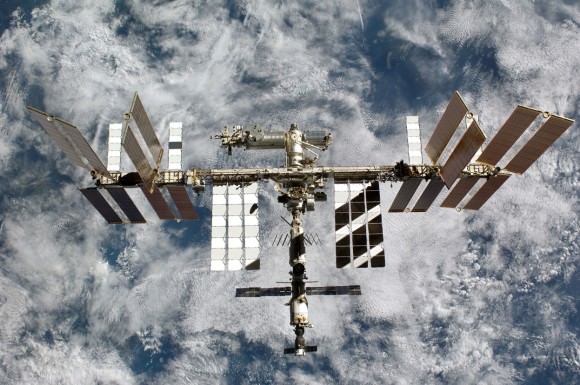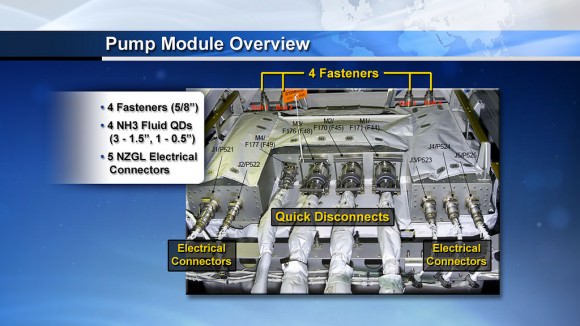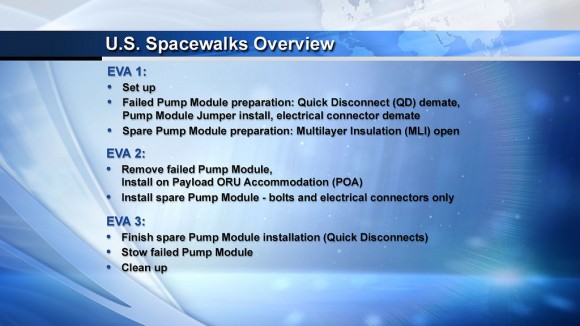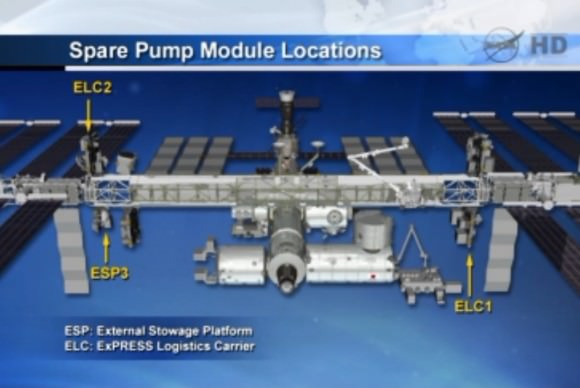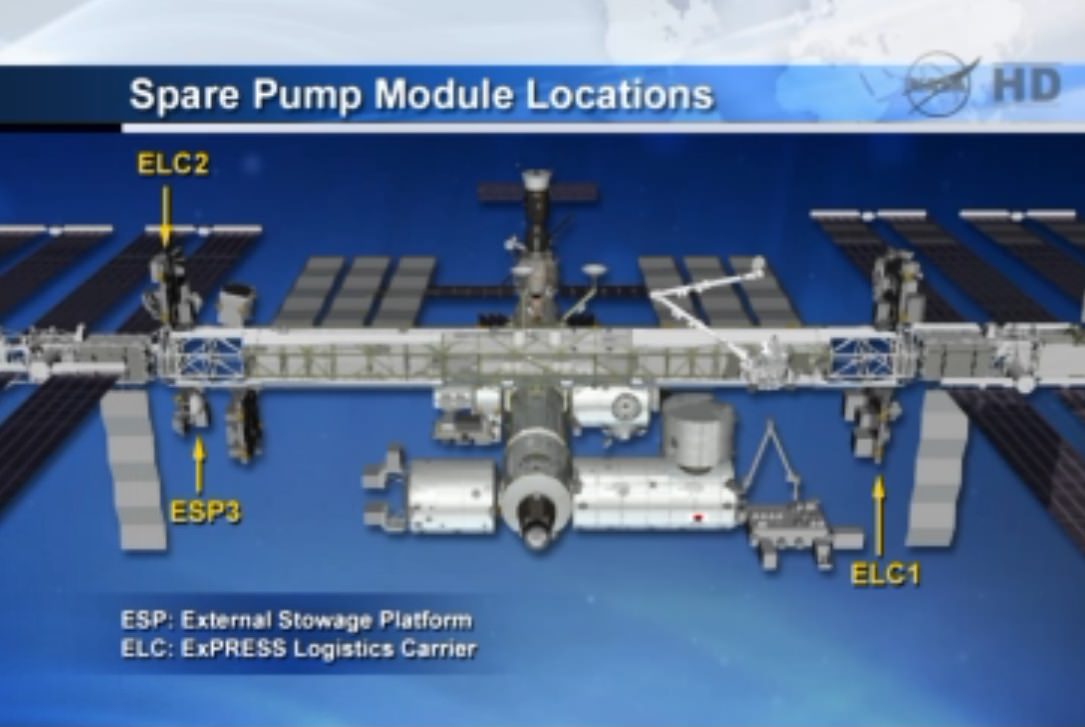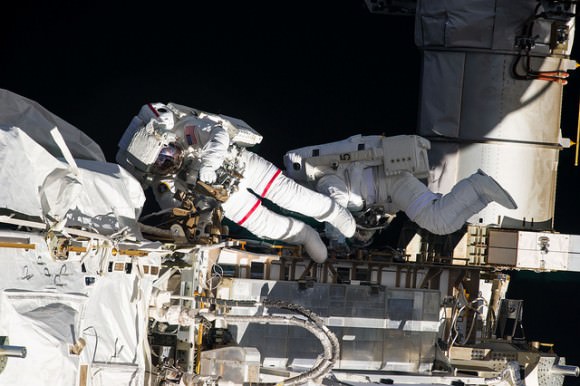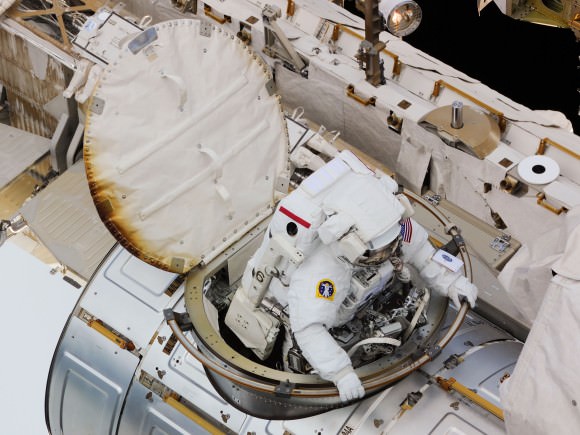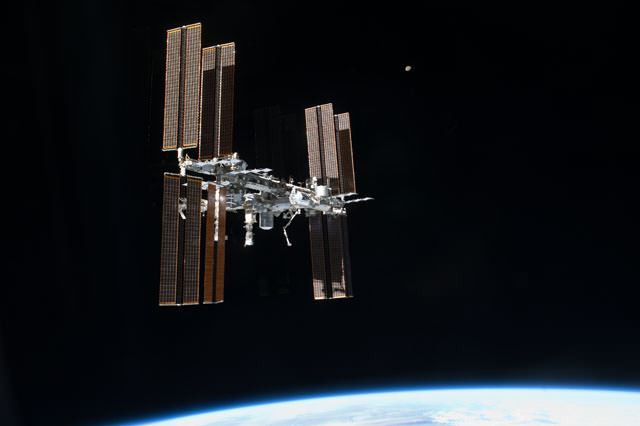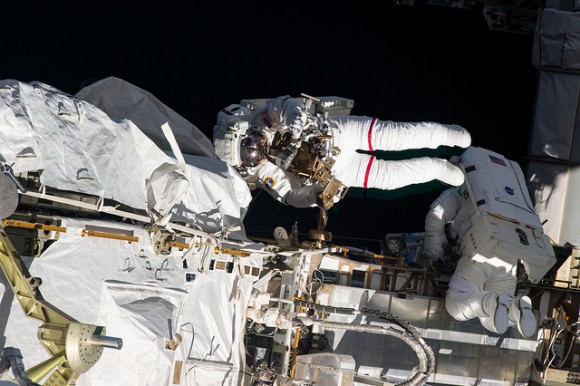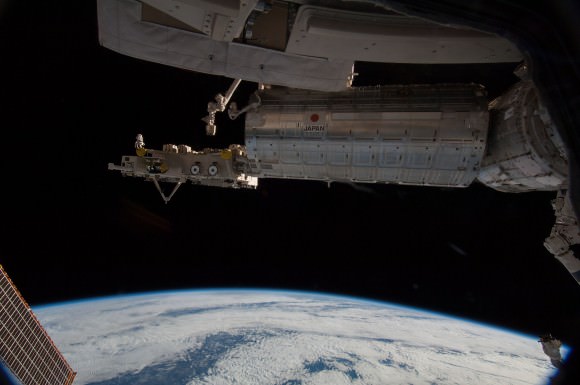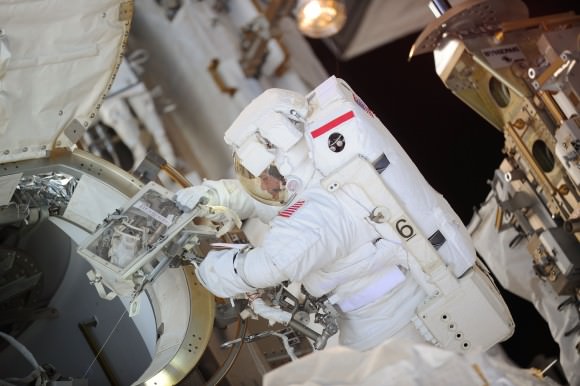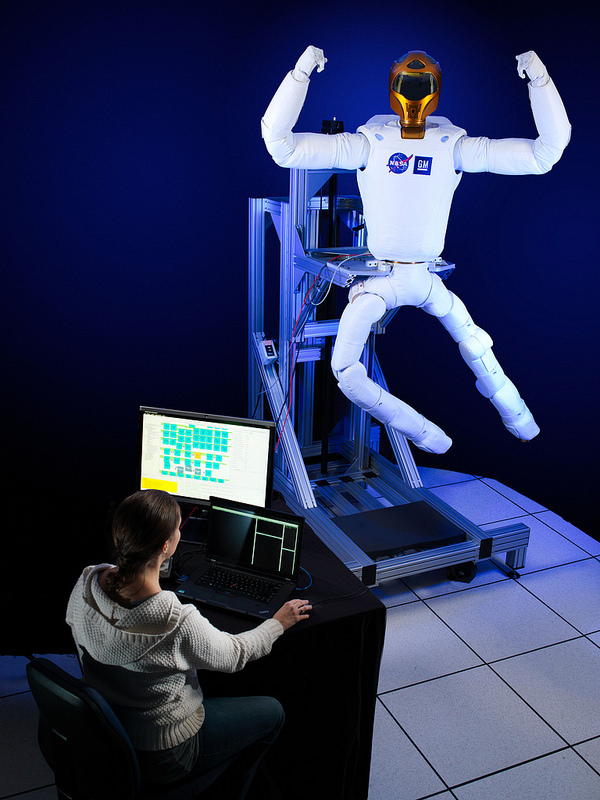The ghosts of spacewalks past did not haunt the quick-working pair of astronauts who began replacing a faulty ammonia pump on the International Space Station today (Dec. 21).
Unlike a difficult spacewalk to do a similar repair in 2010, NASA astronauts Rick Mastracchio and Mike Hopkins were so far ahead of schedule that they began doing tasks scheduled for the second in their expected trio of spacewalks.
In better news yet for the spacewalkers, a water leak in Hopkins’ spacesuit this past July — one that sent astronauts scrambling back to the airlock for safety — did not happen again, showing that the part replacement NASA directed had worked. An unrelated water issue in Mastracchio’s suit, however, made agency officials decide to delay the next spacewalk one day to Dec. 24.
The pump replacement is needed to put the space station at full fighting weight. Since Dec. 11, science experiments and other non-critical systems have been offline since a valve in the pump broke. While the astronauts are in no immediate danger, one of their two cooling loops is shut down and there is not a big margin of safety if the other loop fails.
Since this is NASA’s first spacewalk since the leaky suit was last used, the agency emphasized two new measures it has to protect the astronauts if another leak occurs. The first is a new helmet absorption pad (HAP) to soak up any water in the helmet. The second is a pipe — a snorkel — that would let astronauts breathe air from another part of the suit, if required.
But with every “HAP check” that CapCom and astronaut Doug Wheelock called up to the astronauts today, they reported that the suits were dry and everything was fine. The new water issue happened after the spacewalk, while the astronauts were repressurizing the airlock. In a statement, NASA said water could have entered Mastracchio’s suit sublimator and decided to switch him to a backup suit as a precaution.
The spacewalk tasks themselves, however, went far more swiftly than problems Wheelock experienced in 2010, such as when an ammonia line on the pump refused to unhook as required and caused a lengthy delay. NASA made some changes (such as lowering the pressure on the lines, as Wheelock told Universe Today), and this time, Mastracchio powered through the line and electrical removals. The astronauts quickly moved 1.5 hours of schedule and then beyond. A few stray ammonia flakes hit Mastracchio’s suit, but not enough to cause concerns about contamination since the traces of substance baked off in the sun as he worked.
“I don’t know if you believe in miracles, but I got it on the first try,” Mastracchio radioed early in the spacewalk as he got a tricky part of a Canadian robotic arm foot restraint threaded. Mastracchio rode the arm for much of the spacewalk while Hopkins was the “free floating” colleague hovering and doing other tasks nearby.
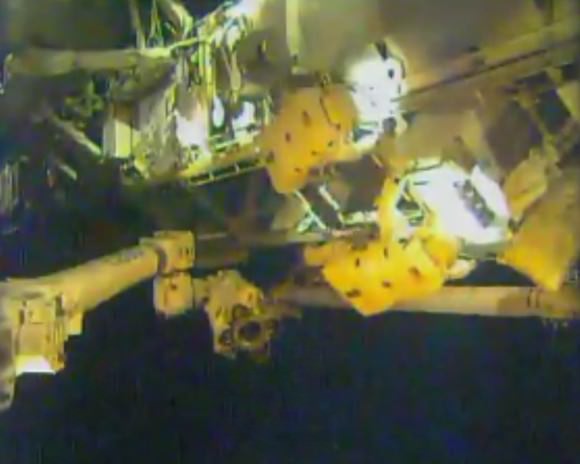
The most spectacular television shots occurred towards the end of the five-hour, 28-minute spacewalk when Mastracchio carefully wrestled the 800-pound ammonia pump module out of its spot on the space station while riding aboard Canadarm2. (Controlling the arm was Japanese astronaut Koichi Wakata, guided by CapCom and fellow Japanese astronaut Aki Hoshide on the ground.)
After he stowed the module, Mission Control gave the astronauts the go-ahead to put in the spare. Mastracchio, however, said he felt it was best for the astronauts to leave it for next time. While the pair have three spacewalks (including today’s) slated to finish the task, it’s possible they could wrap it up in two — but only if things go as smoothly as this time.
The next spacewalk will take place Dec. 24 at 7:10 a.m. EST (12:10 p.m. UTC), and will be available on NASA Television. We’ll keep you up to speed as the next spacewalk occurs. Today’s excursion was Mastracchio’s seventh and Hopkins’ first.
